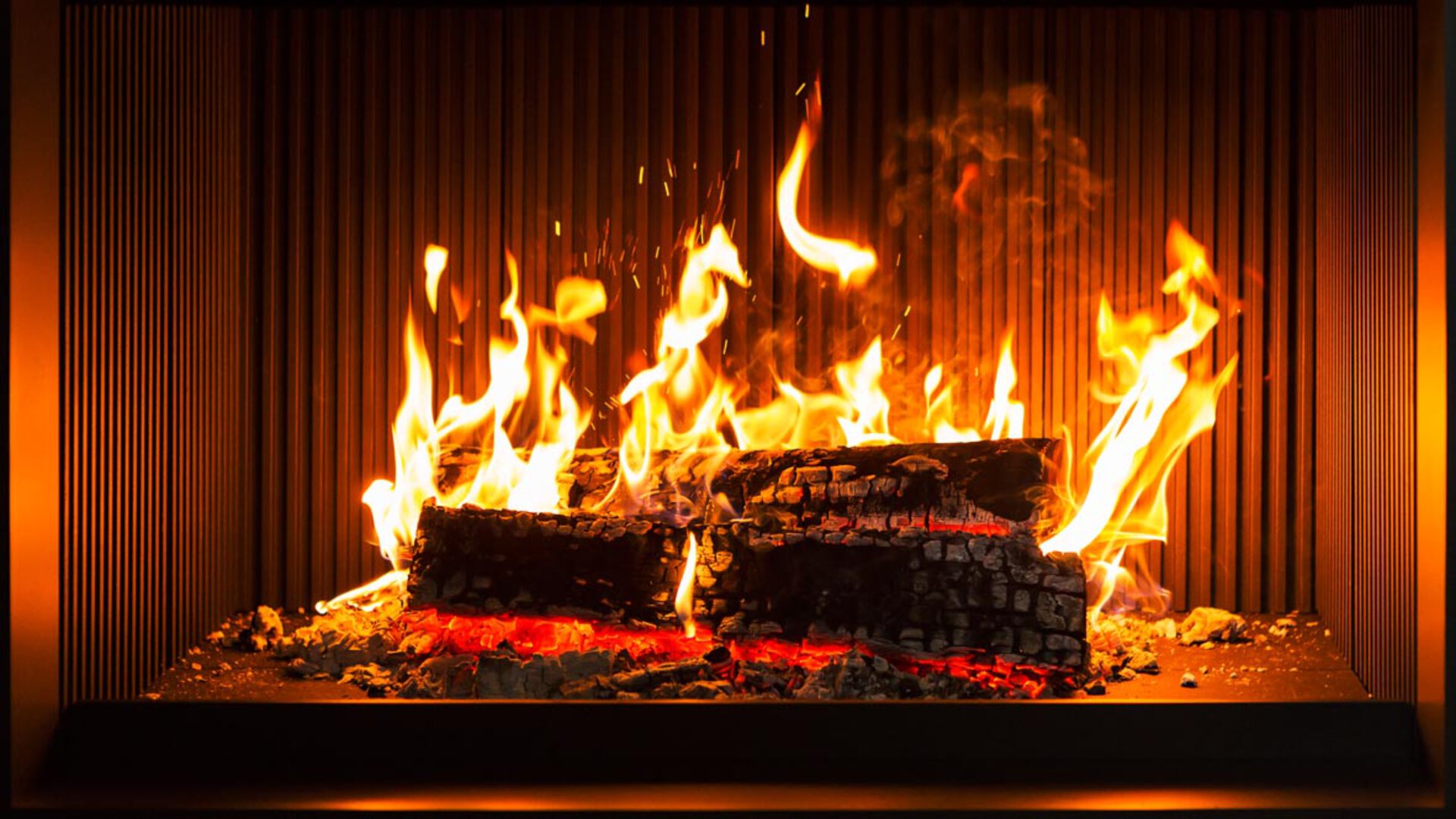Water-bearing devices
Wood fire atmosphere for additional hot water production
Heating support made easy
Water-bearing fireplace and wood fire inserts from BRUNNER make you independent: They support the existing heating system and ease the burden on your wallet. There is no nicer and more sensible way to secure heat for your home. To support an existing heating system or in the transitional period, it is a pleasure to heat with domestic energy. It is associated with a feeling of security and conviction that you can provide the basic need of warmth for your family at any time. Deciding which type and construction method is the right one requires detailed advice. BRUNNER's trade partners will be happy to assist you.
Water-bearing fireplaces and tiled stoves have never been as sensible as they are today
The energy standard of single-family houses with a heating requirement of approx. 4 - 7 kW makes wood fire stove system with integrated water-heat a real benefit for the heat supply of many families. In the transitional period, one or two fires per day can supply hot water and the heating system without the need for a main heating system to "kick in". Even in times of "emergency", the entire heat requirement can be generated by a water-bearing fireplace or tiled stove.
An ideal combination is, for example, the BRUNNER heat pump with a water-bearing wood stove system. If the air-water heat pump no longer works as efficiently at low minus temperatures, there is hardly anything more sensible than to relieve the load with the wood stove. Especially on frosty days, higher heating water temperatures are required for the heating circuits. This is delivered by the fireplace or tiled stove boiler.
For comfortable use of such "hybrid heating systems", we recommend BRUNNER system solutions with a buffer tank and a perfect hydraulic heating installation (e.g. BRUNNER BHZ heating centre). There is no better and clearer way to control and operate a modern heating system. And what happens in the event of a power failure? With a BRUNNER emergency power supply, all the necessary heating pumps and the control system remain in operation. It's great that we have these solutions today.

The difference
Tiled stove and masonry heater
At first glance, brick tiled stoves and masonry heaters or storage heaters can hardly be distinguished from each other from the outside. The different technology is hidden inside the system. But one thing is undisputed: water-bearing fireplace and wood fire inserts by BRUNNER are among the best that are available on the market.


The tiled stove
A tiled stove is usually made of stove tiles by a master stove fitter. There are also installations made of bricks that are plastered. The lining of a tiled stove with fireclay bricks in the combustion chamber and the fitting of flues did not appear until the 20th century. A tiled stove can absorb large amounts of heat and release it into the room over a long period of time - also because of the fireclay bricks, which store the heat that is generated. The appearance of masonry tiled stoves has changed a lot in recent years. Nowadays, they are very rarely tiled, and the typical green stove tile is hardly ever seen anymore. Simple and puristic designs with clear lines, a lot of white plastered surface in combination with rich brown tones or black and large viewing windows dominate. Large-format ceramics are often used for fire tables and benches.
A tiled stove works like a hot-air stove. Behind its casing there is a heating insert - BRUNNER is regarded as the leading manufacturer of heating inserts - and at the flue of the heating insert there is a reheating unit, so that not only the heat from the combustion chamber can be used, but also the heat from the flue gases. The installation room is heated by hot air from the stove. At the same time, part of this heat is stored in a reheating box and only released over time. This means that a tiled stove cannot heat the room as quickly as a wood stove, but it can do so for much longer, even hours after the fire has gone out.
The masonry heater
The oldest representative of all tiled stoves is the masonry heater. All components can be handcrafted by the master stove maker or it can be designed with a prefabricated firebrick combustion chamber and storage modules. There are no limits to the imagination when it comes to design and materials. A masonry heater can be heated with three to 18 kilograms of wood. It is equipped with a ceramic mass storage across which heating gas flows. A masonry heater stores the released energy in this mass. The heating effect is achieved by heat radiation through the stove cover. This so-called radiant heat is perceived as particularly pleasant. The storage determines the amount and duration of the heating power. If a lot of storage mass is installed, the surface temperature is low. This makes it almost impossible to overheat a room. A masonry heater takes a long time to heat up, but it stays warm for a long time. It is recommended to heat it at least once a day during the entire heating season
.
Water-bearing fireplace or water-bearing tiled stove?
A simple decision in itself, which is based on personal taste and heating requirements and should be made right at the start.
- A water-bearing fireplace is installed if large viewing glass sizes and a fireplace atmosphere are desired.
- If the fireplace is to heat the room with pleasant radiant heat ("tiled stove effect"), water-bearing tiled stoves are planned.
The choice of the heating insert is only made in the second step. Here, the heat requirement of the building and the size of the installation room are decision criteria for the planner. BRUNNER offers such a wide variety of water-bearing heating inserts that it is almost always possible to find the desired solution with the right fireplace or tiled stove.
It’s all in the planning
Heating load and wood demand
Only if it is known what the demand of a building is, statements can be made about the required amount of wood. Heating load calculations according to EN 12831 are prepared by engineering and planning offices and are also offered as a service on the Internet. The heating load is calculated for extremely low outdoor temperatures (-12 °C to -16 °C) (53.6 - 60.8 degrees Fahrenheit). On normal winter days, the demand is 30 - 50 % below the design case.

Masonry fireplace
Simply always unique
A masonry fireplace or masonry tiled stove is an eye-catcher in any living space. Systems that are used as room dividers are a special visual highlight. And they are unique pieces of craftsmanship, individually made by the master stove maker. There are no limits to imagination and design, from modern to classic, everything is possible.
A masonry fireplace or a masonry tiled stove are fireplaces surrounded by mineral materials such as natural stones. They are individually planned and set by the master stove fitter. In order to take advantage of the structural conditions and to ensure the optimal function of the fireplace system, the chimney sweep should be involved in the project from the beginning. He knows the key data such as floor area, flue diameter, smoke volume, chimney, height and heat output.
With masonry systems, a distinction is mainly made between two types of stove: the tiled stove and the masonry heater or storage heater. Both are traditionally built by a master furnace builder. The fireclay tiles used for this purpose store heat and give it off to the living room for a long time.
The heating insert used - for example from BRUNNER - guarantees efficient combustion, maximum heating conformity and cosy warmth. It can also be selected as a water-bearing version. In this case, the heat generated during combustion is also used for hot water preparation. The hot water can then be fed into both the heating circuit and the domestic hot water circuit. A masonry tiled stove or masonry heater, water-bearing heating inserts and solar thermal systems are also available as a combo.
Stove control
Operating comfort at its best
A wood fire stove system is only as good as the fuel and the operation. Therefore, it is important and sensible to install an electronic stove control (EOS), especially for a water-bearing stove. In addition to the effect of the automatic combustion control with the highest degree of efficiency, you get great ease of use. Just place the wood on the stove and light it; everything else is regulated by the combustion control system itself. The current situation of buffer tank load status and heating is displayed particularly clearly. Via the touch display integrated into a glass panel, everyone can follow and experience how heat is generated, stored and retrieved.
The myBRUNNER app also rounds off the range, allowing the heating to be controlled from the comfort of the sofa.

Safety
For the safe operation of a water-bearing fireplace, sufficient negative pressure in the pressure must always be available. The negative pressure safety control (USA) checks from the moment of heating up whether sufficient negative pressure is built up by the chimney to safely discharge the heating gases. If a kitchen extractor hood or a defective ventilation system works against the chimney impact, the USA switches off the corresponding fault factor for safety reasons. Otherwise, gases from the stove system could flow into the room. The monitoring unit is activated as soon as you light the wood fire. In the meantime, the system is on "standby".
Consult your furnace builder to find the right heating insert for your home.
Also use our social media channels to get inspired.












































